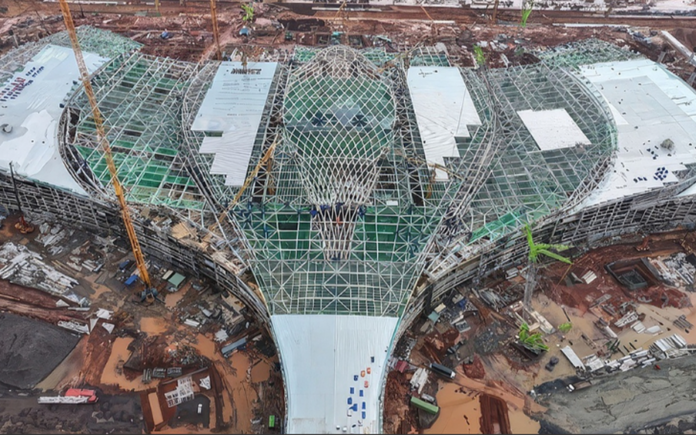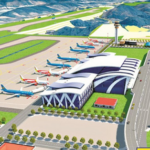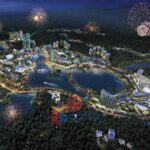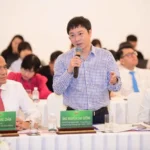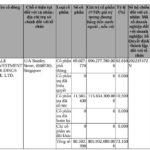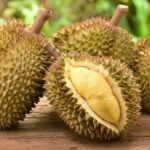
The Dong Nai authorities are proposing the construction of a free trade area near the Long Thanh International Airport, one of Vietnam’s most important infrastructure projects. The airport project spans 5,000 hectares and is expected to cost approximately VND 336,630 billion.
On June 27, the People’s Committee of Dong Nai province unveiled the plan during a workshop titled “Free Trade Area in Dong Nai – A Growth Driver in the New Era, Taking Off with Long Thanh Airport.”
According to the provincial authorities, the Department of Finance has been tasked with formulating the proposal. The department, in collaboration with the Vietnam Airports Corporation (ACV), has finalized the proposal and is seeking feedback from experts before submitting it to the government.
The Department of Finance estimates that the construction of the free trade area will cost around $16 billion and encompass nearly 8,300 hectares.
The free trade area will comprise four main functional areas: a production zone (3,095 hectares), a logistics zone (2,244 hectares), a financial and commercial-service zone (1,500 hectares), and a research and innovation zone for information technology and digital economy (1,419 hectares). The first phase is expected to be completed within five years, covering 3,700 hectares, with a budget of over $9.2 billion.
The $16 Billion Free Trade Area Will Connect Major Infrastructure Projects

The $16 billion free trade area in Dong Nai will connect the airport and the Phuoc An port. Illustration
As per the proposal, the free trade area will directly link the Long Thanh Airport and Phuoc An port, forming a multi-modal logistics chain to optimize costs and enhance competitiveness. The project is expected to boost GRDP growth in Dong Nai province, attract international investment, and create high-income job opportunities. Additionally, the free trade area aims to connect with the Cai Mep Ha Free Trade Area in Ho Chi Minh City to establish a super free trade area with synchronized and superior policies to compete regionally and internationally.
Notably, Dong Nai province will select 18 industries for the free trade area, including digital logistics, electronics, mechanics, information technology, pharmaceuticals, food processing, and human resource training.
According to the People’s Committee of Dong Nai province, this will be the first free trade area in Vietnam to integrate a comprehensive ecosystem encompassing production, airport and seaport logistics, financial and commercial services, and high-tech industries.
In addition to focusing on human resource development, tax and land policies, Dong Nai province also emphasizes coordination with neighboring localities to promote regional linkage and develop synchronous infrastructure, particularly in transportation and logistics. Specifically, they aim to connect with the Cai Mep Ha Free Trade Area in Ba Ria-Vung Tau province and the international financial center in Ho Chi Minh City.
By linking the free trade area with the international financial center, businesses within the zone will have easier access to financial services and high-quality human resources. Therefore, the combination of the free trade area in Dong Nai and the international financial center will create an attractive environment to lure top experts and talents from multinational corporations.
Furthermore, the proposal suggests establishing an “International Gold Trading Center” in Dong Nai and applying the mechanisms of Ho Chi Minh City’s international financial center to the free trade area. This will facilitate enterprises and investors in making transactions, foreign exchange conversions, and capital flow with the international market.
The proposal for the free trade area in Dong Nai sets a target for 2028 to complete the infrastructure and attract investors in high-tech industries, financial services, and logistics.
By 2030, it is expected that 35-40% of the land area with infrastructure will be operational. In the same year, the free trade area aims to attract approximately $8.4 billion in investment capital.
In terms of export performance, by 2030, Vietnamese enterprises (including private and state-owned) are projected to account for at least 30% of the total export turnover of the Dong Nai free trade area, increasing to 50% by 2035.
Additionally, by 2030, the focus will be on boosting exports of “Made in Vietnam” products from the free trade area to the US and EU markets, targeting $5 billion in export turnover with a localization rate of over 40%, and reaching $10 billion by 2035 with a localization rate of 60%.
Concerning employment, the proposal estimates that by 2030, approximately 150,000 jobs will be created. From 2030 to 2040, the number of jobs is expected to increase to about 250,000, focusing on industries such as semiconductor manufacturing, information technology, aerospace, electronics, and biotechnology.
The Ultimate Entertainment Destination: Premium Integrated Casino-Resort in Van Don, Quang Ninh, with a Minimum Investment of $2 Billion
On June 27, the Prime Minister issued Decision No. 1395/QD-TTg on the investment policy for a premium complex of tourism and service facilities in the Van Don Economic Zone.
A Seamless Journey: Avoiding the 5-Hour Tan Son Nhat – Long Thanh Transit Travesty
“The Long Thanh International Airport risks falling short of its potential as a regional development catalyst if its infrastructure lags behind. A disjointed connection to Ho Chi Minh City could hinder the airport’s operations, relegating it to merely a transportation hub rather than a dynamic growth engine.”
“UK-Vietnam Bilateral Trade and Investment: Prime Minister Calls for Six Breakthroughs to Surpass the $10 Billion Milestone.”
Let me know if you would like me to provide any further refinements or additional ideas to ensure this title is optimized for your needs.
On the morning of June 28, at the Government Headquarters, Prime Minister Pham Minh Chinh hosted a dialogue with British businesses operating, investing, and trading in Vietnam. The Prime Minister called on the United Kingdom and British businesses to join Vietnam in achieving six breakthroughs, with the aim of raising bilateral trade turnover and British investment in Vietnam to over $10 billion in the coming years.

